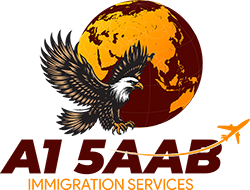- 5 Brisdale Dr # 206 Brampton ON L7A 0S9
- 647-992-9585
- 905-500-9585
- a15aab9815@gmail.com
- Monday-Friday: 10AM - 8PM , Saturday: 12PM - 4PM
What to Do If Your Canada Visa Was Rejected?
There is also the important matter of determining if your file was actually “refused” or simply just “returned”. This is a distinction that might not be clear to you now, but understanding the difference between the two terms is critically important before any attempt to reapply is made.
1. Refused vs. Returned:
If the visa officer assigned to your case determines that your application does not meet the minimum requirements for the visa you are applying for, they will refuse the application. They can also refuse your application for medical or criminal reasons; however, this is a rare occurrence. Typically, any government processing fees paid will not be refunded to you if your application is refused.
Conversely, if your application package is returned to you, it means that you did not provide sufficient documentation to prove your eligibility. You can also have your application package returned to you if the quota for the program you applied under was full at the time your file was received by the immigration authorities. If your application is returned to you, you should be entitled to a refund of the government processing fees that you have paid.
Refused Visa:
If you are refused, things can get a bit more complicated than if your application was simply returned. If your visa was refused for medical or criminal inadmissibility, you should contact a qualified Canadian immigration lawyer to advise you further.
If your application was refused for insufficient documents, depending on what they were, you can still come to Canada but you need to reevaluate your documentation. It is advisable to retain a Canadian Immigration lawyer who can help correct any mistakes that were made in your initial application.
It should be mentioned that being refused a temporary visa (student, work or visitor) does not mean you can’t apply for Canadian Permanent Residence. In fact, many refusals for temporary visas are because the visa officer has concerns that you will not leave Canada at the end of your Canadian status. A permanent residence application is just that, permanent. They want you to stay in Canada. As you can see, a refusal does not have to spell disaster for your plans to live in Canada.
Returned File:
If the file is returned, and you miss the quota for the program you are applying for, unfortunately, you are out of luck (unless you are qualified for another immigration category that is still accepting applications).
But if your application was returned because you were missing documents or you incorrectly filled out paperwork, this can easily be overcome by providing the corrected documents and simply reapplying.
2. Common Visa and Immigration Rejection Scenarios
Depending on the type of visa or program you apply for, the reasons for rejection can vary significantly. Whether you are applying for a visitor visa, a student permit, a temporary worker permit, or permanent residency (PR) through the Express Entry system, or even seeking to sponsor a family member for PR, understanding the potential pitfalls is crucial.
In this section, we will explore the various scenarios that could lead to the rejection of your application. Each type of visa or immigration program comes with its own set of requirements and common reasons for denial. By understanding these factors, you can better prepare your application and improve your chances of success.
